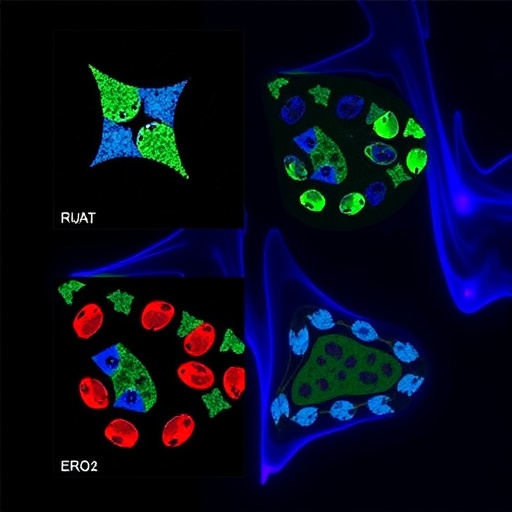BK polyomavirus reactivation is a major source of kidney damage in transplant recipients leading to rejection, so reducing viral levels may save more kidneys.

Credit: UAB
BIRMINGHAM, Ala. – While studying one of the smallest DNA viruses known, Sunnie Thompson, Ph.D., may have found a new way to help prevent kidney damage following organ transplant.
The University of Alabama at Birmingham researcher studies BK polyomavirus, a major source of kidney damage and rejection in transplant recipients. Nearly all humans silently harbor polyomaviruses in their bodies; but when transplant recipients receive drugs to suppress their immune system to prevent graft rejection, the virus can reactivate, resulting in damage to the kidney.
No FDA-approved therapy exists to combat BK polyomavirus. Thompson, an associate professor in the UAB Department of Microbiology, says that, if their findings can be verified in human patients, they may have discovered a new way to reduce BK polyomavirus levels in transplant patients without reducing the immunosuppressing drugs that are needed to prevent transplant rejection.
Thompson’s findings came through basic research on the virus, now published as a featured article in the Journal of Virology.
With only seven genes, the polyomavirus must commandeer the host cell’s DNA replication machinery in order to produce new viruses. To do this, the virus forces host cells to start replicating to subvert the cell’s proteins into making copies of the virus. Viral replication activates a response to DNA damage; but it was unclear why this was important for viral replication, so Thompson’s laboratory set out to understand how activation of the DNA damage response helped the virus.
The DNA damage response involves two major proteins called ATM and ATR that are recruited to sites of DNA damage. Activation of this response leads to DNA repair, arrest of cell replication while the DNA is being repaired, or cell death if the DNA damage is too severe. Thompson and her colleagues inhibited ATM or ATR in infected cells, which revealed that the virus activated the DNA damage response in order to arrest the cell cycle. This kept the cell’s proteins available to continue to replicate the virus.
When ATR was inhibited in cells infected with BK polyomavirus, infected cells began to divide while they were still making DNA. This led to severe DNA damage and decreased viral production.
The role for ATM was different. ATM was needed for the virus to start host DNA replication. ATM also prevented the cell from entering mitosis, though only after DNA replication was completed, resulting in reduced viral production, but with no DNA damage.
Importantly, these inhibitors did not alter the cell cycle or increase DNA damage in uninfected cells. Only BK polyomavirus-infected cells treated with these inhibitors had increased cell division, which reduced viral titers. Since these inhibitors are already in clinical trials as cancer drugs, this may provide an opportunity to use them to reduce BK polyomavirus levels in kidney transplant patients with active BK polyomavirus infections. The current standard of care is to reduce the drugs that suppress the immune system, which increases the chances of transplant rejection.
###
Thompson’s co-authors for the study, “BK polyomavirus activates the DNA damage response to prolong S phase,” are Joshua L. Justice, Ph.D., and Jason M. Needham, UAB Department of Microbiology. Justice is now a postdoctoral fellow at Princeton University.
Support came from National Institutes of Health grant AI123162. Justice was supported by NIH training program grant GM008111.
Media Contact
Jeff Hansen
[email protected]
Original Source
https:/
Related Journal Article
http://dx.




